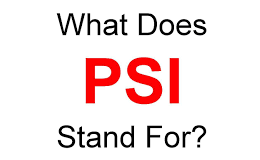

- Tire low inflate to 35 psi meaning how to#
- Tire low inflate to 35 psi meaning drivers#
- Tire low inflate to 35 psi meaning driver#
- Tire low inflate to 35 psi meaning manual#
Here is how to properly inflate your tires:
Tire low inflate to 35 psi meaning driver#
We recommend sticking with air but every driver has their preferences. You may have also heard about substituting nitrogen instead of air. Unfortunately, these alerts don't activate until the tires are 25% below their proper air pressure, though the negative effects of driving on underinflated tires can begin with as little as 5% underinflation. However, TPMS should not be relied on for routine tire maintenance.
Tire low inflate to 35 psi meaning drivers#
Since modern vehicles are now typically equipped with a TPMS (Tire Pressure Monitoring System), many drivers feel they can simply wait until their vehicle alerts them to unacceptable tire pressure readings. Keep in mind that some vehicles require different air pressures on the front and back axles.ĭon’t put off tire pressure maintenance it could lead to a flat tire, blowout or even tread completely coming off the tire. We suggest that you get in the habit of checking your tires, including your spare, every other time you fill your gas tank. It’s best to get into a routine when it comes to vehicle maintenance, and checking your air pressure is on top of that list. If your tires look like these, give us a call or stop by one of our many locations and we can advise you. You can also see in the diagram below that the tire tread will weary differently depending on whether your tires are over or under inflated.
Tire low inflate to 35 psi meaning manual#
Remember to always check the owner’s manual or tire placard for your vehicle’s correct tire pressure. They mistake the maximum pressure for the recommended psi range. Some drivers accidentally over-inflate their tires after misreading the numbers on their tire’s sidewall. Overinflation occurs when tires are inflated with pressure exceeding the recommended psi. Overinflation causes tires to suffer adverse effects, including a harsh ride, poor handling and irregular wear. Learn more about overloading and underinflation. Load weight: Underinflated tires pose additional risks in relation to the load (the amount of weight) your vehicle can carry. While still embedded, air pressure could drop at such a slow rate you may not notice. Road hazards: Debris like small nails, screws, etc., can puncture and embed in your tire tread and then act as an inefficient plug. Permeation: Tires also naturally lose pressure over time through permeation, where air escapes from the solid rubber sidewall at a rate of roughly 1-2 psi per month.Īltitude: Seasonal or altitude changes can also cause a drop in air pressure. Weather: Tire pressure reduces by 1 psi for every 10 degree drop in temperature. Drivers need to be aware that routine stresses, environmental factors and impacts from driving conditions can reduce tire air pressure: Underinflation causes poor handling, fuel inefficiency, and an increased risk of tire failure. Both scenarios can reduce the performance of your tires and cause them to wear more quickly. Keeping your tires properly inflated extends their lifespan, keeping more tires out of landfills, Maintaining the recommended tire pressure decreases fuel consumption, preserving natural resources and keeping the environment cleaner.Īvoid driving on underinflated or overinflated tires. When a vehicle is rolling on underinflated tires, the engine has to burn more fuel to power it appropriately. Most drivers will reduce their tire tread life due to underinflation, some as much as 50%. In addition to increasing your savings and safety, proper tire pressure also helps the environment. Start with Treadwell, our intuitive tire buying guide! START WITH TREADWELL If your tires are threadbare, worn or damaged, it’s time to replace them. Proper inflation also helps keep accidents like tire blowouts or tread tears at bay. Good tire air pressure ensures that tires wear evenly, provide a smooth ride, and increase fuel efficiency. Most passenger cars’ psi requirement will be between 30 to 35 psi, but several vehicles fall outside of that range and every vehicle will have specific requirements. The placard or manual should list the appropriate psi for both the front and rear tires, as they may be different. Your tires are properly inflated when their pressure matches the pounds per square inch (psi) listed on your vehicle’s tire placard or owner’s manual. Improving handling, cornering, steering and stability while drivingĪt this point you’re probably asking: what is my tire pressure supposed to be?

It’s pretty easy to forget or to delay checking your tire pressure, but keeping your tire psi at the recommended is a necessary part of vehicle maintenance.


 0 kommentar(er)
0 kommentar(er)
